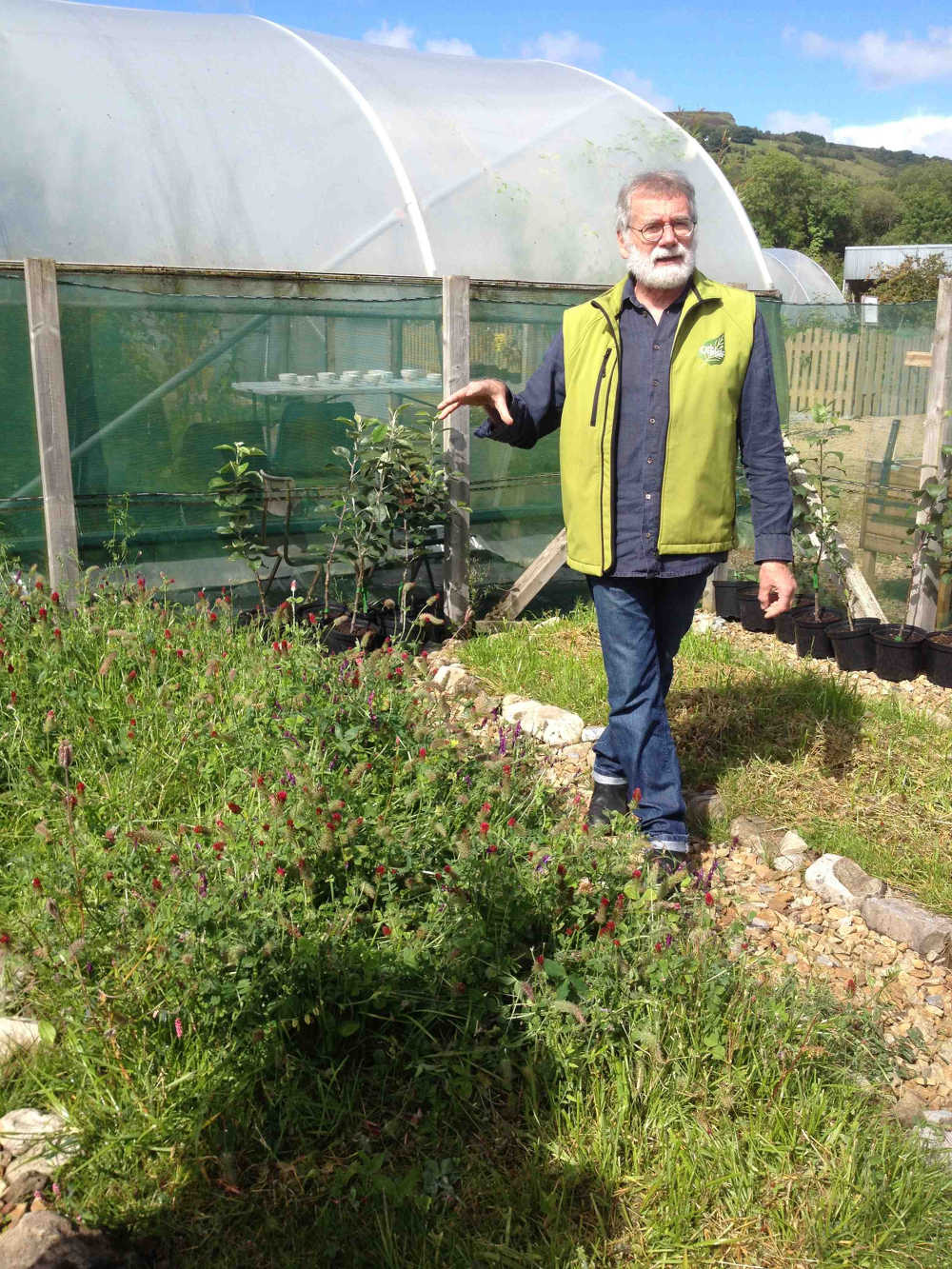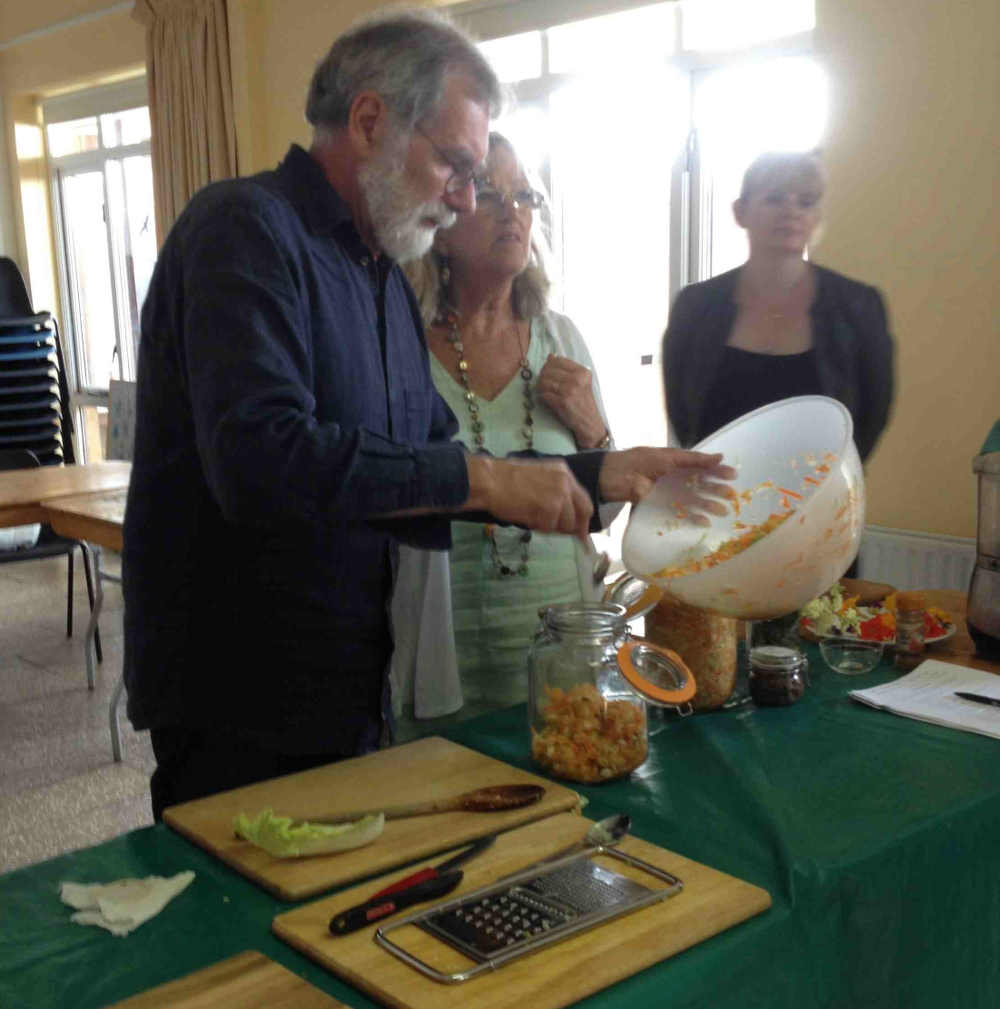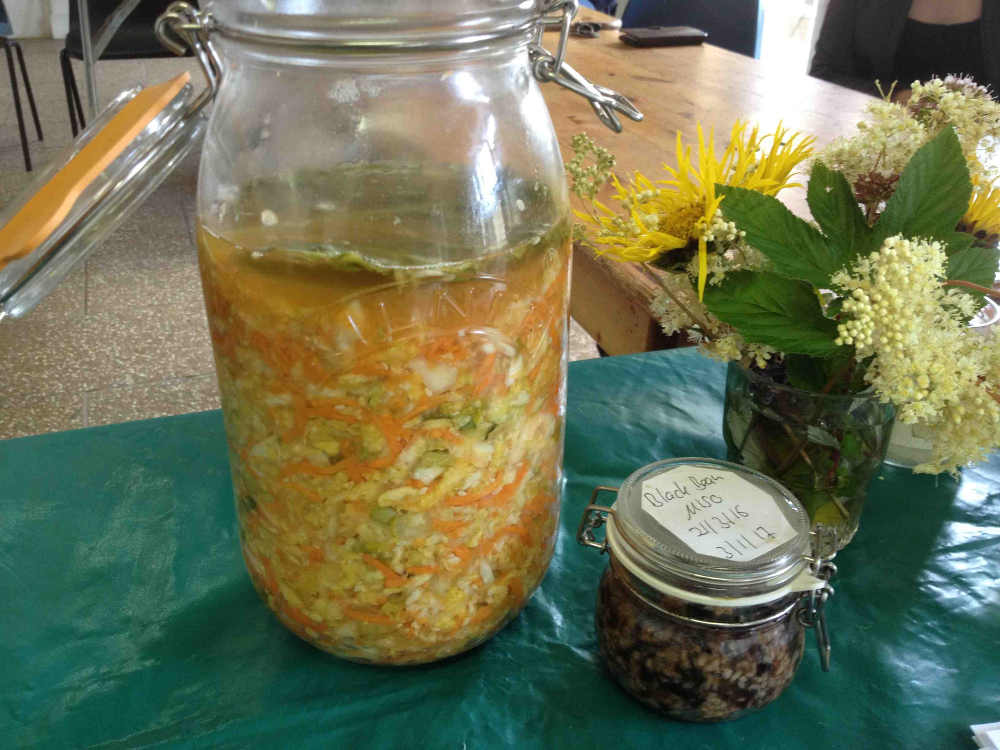Fermenting - In Season

Georgina Campbell
In August, Irish Food Writers’ Guild members visited The Organic Centre in Rossinver, Co Leitrim, where Hans and Gaby Wieland showed us around the wonderful (and highly educational) gardens and treated us to one of the short courses that they hold regularly at the Centre.
August being such a prolific month, the focus was on preserving the season’s bounty for the winter months. Their simple guideline when it comes to choosing preservation methods is ‘Keep the nutrients in!’, and fermenting - which is easier than you might think - is one of their favourites.
Their next Organic Centre Fermentation Workshop is on Saturday 23rd September 10am-4pm, including a light lunch. It’s interesting to learn how the ancient food preserving technique of fermentation can create super nutritious and tasty dishes.

Gaby and Hans show how to ferment vegetables and explain recipes for making miso, daikon radish kimchi, fermented squash hummus and beet kvass eggs. Fermented drinks include kombucha, kefir and wild lemonades. Their workshops include practical sessions and demonstrations, finishing up with a taster plate.
The courses are interactive, useful and fun - good value at €70 and well worth attending.
RECIPE: Sweet and Spicy Kimchi
This is a traditional Korean dish that dates back 3000 years. It's a cultured vegetable dish that is spicy and rich in flavor. Kimchi is a fabulous healthy side dish, topping to a sandwich or eaten alone.
• 1 Napa/Chinese or Savoy cabbage, or white cabbage, finely shredded (We usually use Chinese cabbage or savoy cabbage)
• 3 Carrots, finely shredded
• 1 Cucumbers, de-seeded and finely shredded
• 1 Bunches scallions, thinly cut into diagonal pieces
• 1 Apple, finely shredded
• 2 Small oranges, peeled, sectioned and chopped into small pieces - optional
• 2 teaspoons, garlic minced
• 1/2 teaspoon, cayenne
• 2 tablespoons, sesame seeds
• 2 teaspoons sea salt or Himalayan pink salt
1. Keep one large outer leave of the cabbage.
2. Place the shredded cabbage in a large mixing bowl with salt and gently massage to release the cabbage juice. Do this several times; cabbage needs to be floating in its own juice.
3. Add the remaining ingredients and mix well.
4. Firmly pack the vegetable mixture with the juice into a gallon glass jar. Cut the large leave of cabbage into the shape of jar and cover the vegetable mixture. Place a pint size, water filled, and tightly covered glass jar on top of the veggies to keep them submerged in the liquid while fermenting.
5. Cover with a clean tea towel or muslin and store in a warm dry place for 2 days. After 2 days check flavor, and if it's to your fermented taste, you're done. If you like more tartness let it go for another day and check again.

Health benefits of Kimchi
Koreans eat so much of this super-spicy condiment that natives say “kimchi” instead of “cheese” when getting their pictures taken. Kimchi is loaded with vitamins A, B, and C, buts its biggest benefit may be in its “healthy bacteria called lactobacilli, found in fermented foods like kimchi, yogurt …
It will help digestion, plus it seems to help stop and even prevent yeast infections, according to a recent study. And some studies show fermented cabbage has compounds that may prevent the growth of cancer.
Tip
If you have no time to make your own, you might be able to pick it up in the refrigerated section of an Asian store, your local health food store or delicatessen shop, or Polish shops and serve with small bowls of the warm potato salad on the side.





There are currently no comments
Leave a comment
Not a member? Register for your free membership now!
Or leave a comment by logging in with: